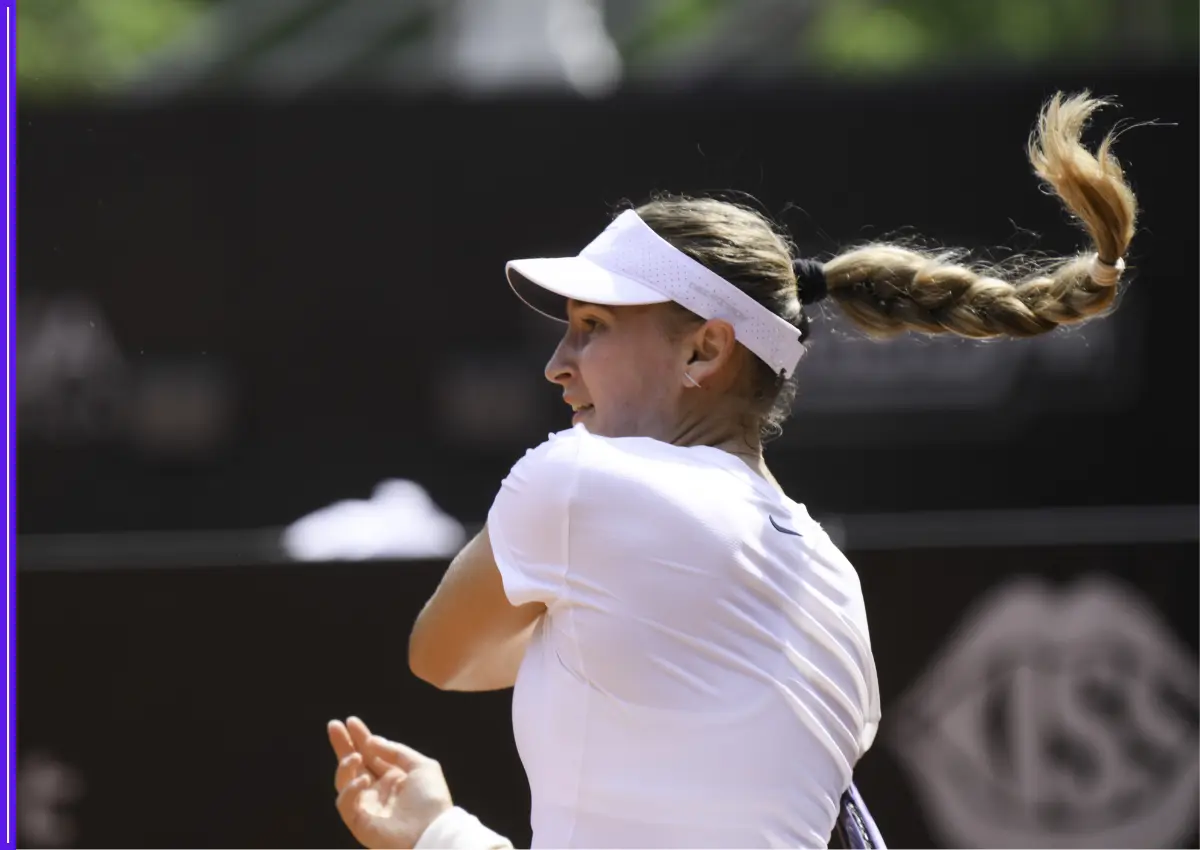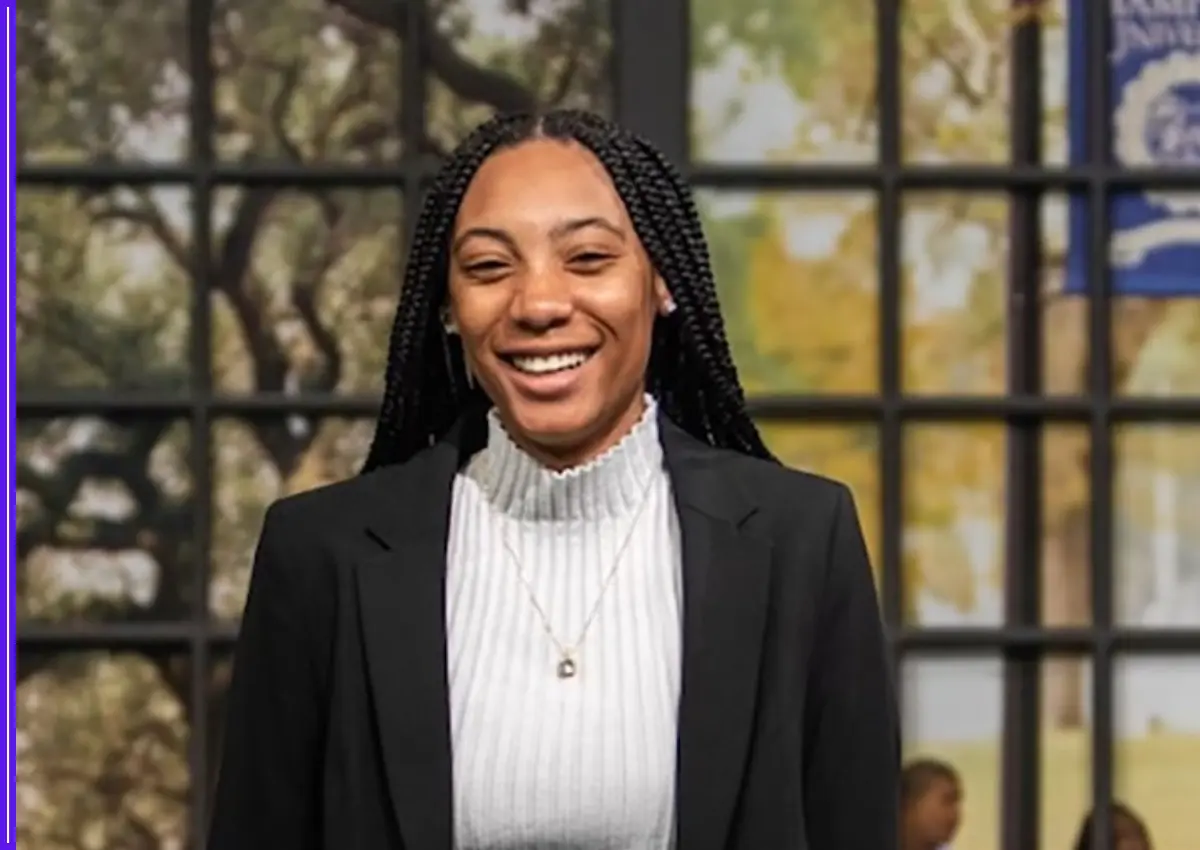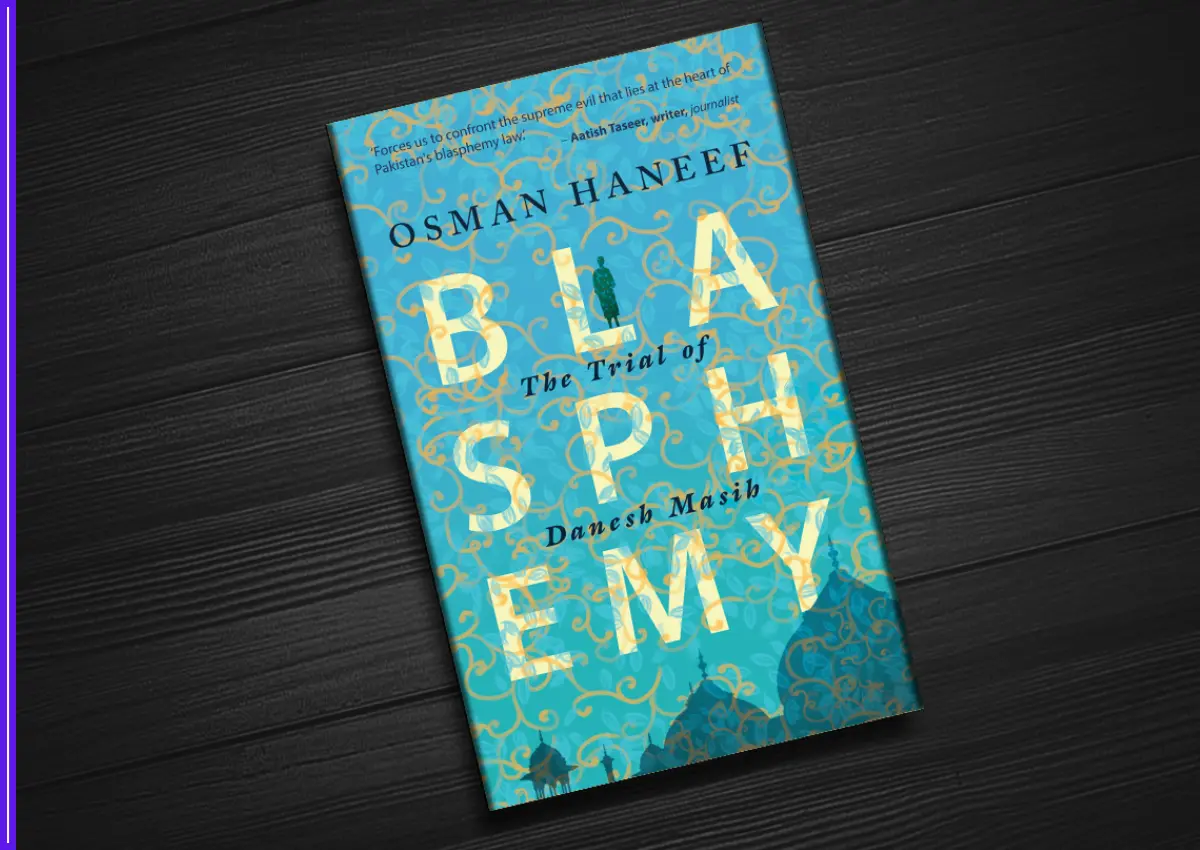Lt Gen Madhuri Kanitkar, the third female officer to be promoted to the three-star rank in the Armed Forces, stated, “If every girl dreamed that she wants to join the army and grew up with that dream in her mind, whether she finally lands up or not, half the battle would have been won and the country would be amazing.” India possesses the world’s second-largest armed forces. The military forces have historically been dominated by men. These days, though, as Indian women strive to cross the last border, the armed forces are becoming their first choice.
These remarkable women are inspiring future generations as they walk shoulder to shoulder with their male superiors, assuming jobs ranging from combat to medical corps.
Captain Divya Ajith Kumar
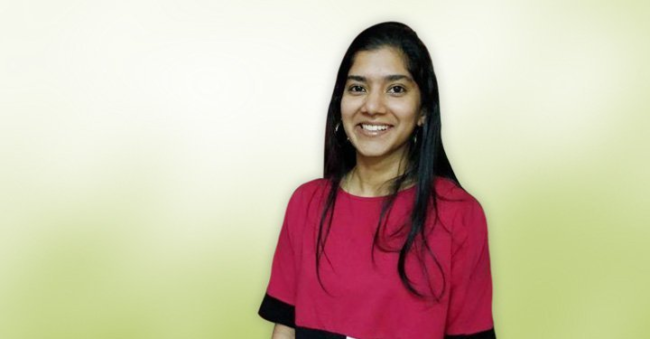
Led the first-ever all-female Armed Forces contingent in the 2015 Republic Day Parade and was the first woman to receive the Sword of Honour during her training.
After leading the first all-woman Army contingent in the Republic Day Parade last year, which US President Barack Obama attended, Kumar, who had only been in the military for five years, quickly rose to national prominence and became an inspiration to women all throughout the nation. However, Kumar, 27, had desired to enter the public service as a teenager. I adored the uniforms so much that even back then, I wanted to join the IPS. Before I joined the NCC, I had no idea that women served in the Army. After that, everything changed, according to her.
The coveted Sword of Honour, which is given to the top cadet of a course (that year’s course comprised 244 cadets, of which around 70 were women), was first given to a woman when Kumar was commissioned in 2010. She states, “The previous year, there were just 25–30 women and the following year, almost 130.” in reference to the gender ratio in the training courses.
Kumar was assigned to Anantnag in Jammu & Kashmir immediately following her training, and she says it was precisely the kind of demanding start she had hoped for. While undergoing training, Kumar has also earned a name for herself in shooting contests. In 2012, she won the gold medal in the General JJ Singh Officers Air Weapons Competition due to her exceptional sharpshooting abilities.
Lt Col Mitali Madhumita

Saved several lives in the attack on Kabul in February 2010 and was the first Indian woman officer to be granted the Sena Medal for valour in 2011.
Her aptitude with languages was useful during a particularly trying period for Lieutenant Colonel Mitali Madhumita. A number of her coworkers were killed and injured when two guest houses in Kabul were attacked during the infamous attack in February 2010. Only two kilometres away, Madhumita from the Army Education Corps was among the first people to arrive at the location.
She became the first Indian woman officer to ever get the Sena Medal for valour in 2011 after her bravery and cunning helped save multiple lives.
“I was relieved that I had independently learned the native language, Dari, during those chaotic times. She says on the phone, “It was helpful during a crisis.
Madhumita was also among the first female officers to command a training squad in Kabul in 2010. The 39-year-old’s passion for languages is obvious and applicable to her work as a communication skills instructor in the Army.
Madhumita, originally from Rourkela, joined the NCC early and excelled in glider flying, winning the gold medal for aeromodelling across all of India.We saw a lot of male cops around 1995, yet I was enamoured with their orderly way of life. It altered my perspective on life. In addition to the obvious splendour of the outfit, I adored the experience,” she exclaims.
Madhumita, a lieutenant who had been commissioned in 2000, was thrilled to receive her first assignment in Jammu and Kashmir. “It was a really busy time.” My brigade moved across the state a lot after the Kargil War ended, practically like the Bakarwals,” she quips, grinning.
Major Poonam Sangwan, VSM

Received multiple honours, including the Chief of Army Staff Commendation Card for meritorious service, the Engineers Medal (Drill and Turnout), the Everest badge, and the Vishisht Seva Medal.
Second-generation officer Sangwan recalls, “My father wanted me to become a doctor in the Armed Forces, but I wasn’t interested.” The 32-year-old says, “I always liked sports, especially athletics, basketball, and volleyball.”
Sangwan’s interests became clear during her sophomore year of college. She registered for the Republic Day parade and became a member of the NCC. “I observed a lot of officers there, and their uniforms were covered in medals and insignia. They never ceased to amaze and intrigue me,” she says. Despite being named the Delhi Directorate’s Best Cadet, she didn’t feel ready to enlist at the time.
“What is the use of wasting money, my grandmother asked when my father wanted me to attend college? She will eventually be married to an officer. “She’ll become an officer before that,” he had said at the time. He brought up this topic with my grandma on the day I was commissioned in 2007,” she recalls.
Sangwan’s father had a custom-made outfit created for her when she enlisted in the NCC. “‘Beta, your uniform should speak for you,’ he would remark. That’s why I always have it pressed, correctly folded, and adorned with shiny badges,” she said. Sangwan does have a lot of medals to polish, including the Chief of Army Staff Commendation Card from 2016 for meritorious service, the Engineers Medal (Drill and Turnout) from 2007, and the Vishisht Seva Medal (2013) for climbing Mount Everest in 2012.
Captain Ruchi Sharma

She made history by becoming the first female paratrooper, a dream that every aspirant to the armed forces sees. She was commissioned in the Army Ordnance Course in 1996 after completing her training at OTA, Chennai, the same facility her father obtained his training from. Among the many difficulties of becoming an operational paratrooper is having to run 40 km in training while carrying a 10 kilogram burden on your back. But an indestructible spirit like her is ready for any task !. And everyone will be inspired to pursue their aspirations despite any hurdles by her maroon beret, something that every youngster and adolescent dreams of having on their head.
Captain Preeti Chaudhary

A Sword of Honor Recipient at Chennai’s OTA She participated in the 72nd Republic Day Parade as the only female commander, leading the Army Air Defence regiment’s Schilka air defence gun contingent. She also walked the Rajpath twice as a member of the NCC contingent. She thanked the weapon system for giving her this exceptional opportunity and humbly said in an interview that she stood there because of her regiment, not because of her gender.
Maj Anjana Bhaduria

Her batchmate, Maj Priya Jhingan, who completed the WSES-1 course at OTA, was the first female officer to receive a gold medal in the Indian Army. Her brother was apprehensive to give her permission to train in Chennai, but her tenacity overcame all of the difficulties. Her contributions were crucial in enhancing the OTA’s training program for female cadets.
Captain Priya Semwal

Became the first wife of a martyred soldier to be commissioned into the Army at the age of 27, following the death of her soldier spouse.
Semwal had little influence on her life because she was married to a jawan at the age of twenty. However, she had to make some important choices on her own when she was 27.
In 2012, her spouse Naik Amit Sharma passed away in Arunachal Pradesh during Operation Orchid. Semwal was juggling raising her five-year-old daughter and finishing her MSc. “I continued to study. My hubby had encouraged me. He was so cute. But his passing was a life-turning event for me,” she claims. Days following Sharma’s passing, Semwal was overcome with sympathy. “Everyone continued calling me ‘bechari,’ forgetting that I was a real person. I detested the term,” she declares.
Colonel Arun Agarwal, Sharma’s commanding officer (CO), was the one who first suggested that Sharma enlist in the Indian Army. I mistook his words for jest. But the mere sound of the word ‘bechari’ would make me combust,” exclaims Semwal, a quick-witted and animated speaker. Her brother’s support was what ultimately convinced her to move forward.
Semwal appeared for the Services Selection Board (SSB) test five months after Sharma passed away. Following several medical test setbacks before her selection and during a particularly depressing day, she recollects Colonel Agarwal saying three words to her: “Never give up.” This has become her life’s mantra.
Maj Priya Jhingan

She was raised by a police officer and always felt that serving the nation and wearing the uniform was more fulfilling than earning a large wage. She submitted a direct letter to the Chief of Army Staff asking for permission to do the same, since women were not being recruited for commissioned officer positions at the time. Priya, OTA cadet number 001, served in the army for ten years as a JAG and consistently proved herself in court. She gives society courage to stand up for what they want and support the country.
Major Neha Bhatnagar, VSM

Oversaw one of the two climbing groups participating in the 2012 Indian Army Women Everest Expedition.
Though the 34-year-old Bhatnagar calls herself a “lowlander” in jest, her time in the Indian Army has been anything but. As part of the Indian Army Women Everest Expedition 2012, she oversaw a portion of the 22-person team that ascended Mount Everest. “We were at the top on May 26 and there was no place else to go,” the woman claims.
She claims that since enlisting in the Indian Army in 2002, attitudes about women have significantly changed. “We are very prevalent these days. We are now ubiquitous, much like salt and water.
The four-time Siachen officer, who is usually cheerful and prepared, shows off all of her badges, which include the Distinguished Service Medal, the Vishisht Seva Medal, three Commendation Cards, and the Everest badge, on her immaculate outfit.
Bhatnagar is an adventure junkie; she recently returned from Australia, where she surfed and scuba dived in the deep sea in addition to climbing Mount Kosciuszko. Fortunately, the Army supports these endeavours. In addition to doing more air sports, I want to go skydiving. Of course, there are still a ton of mountains to scale. “I want to do everything I can think of,” she declares.
First and foremost, she still has a particular spot for climbing. She has been mountaineering since 2009 and has trained for the Everest trip in Siachen and other distant locations beyond Manali. “Everyone who has held an ice axe has heard the echo of Everest in their heart,” the speaker claims.
Captain Ruchi Sharma
She made history by becoming the first female paratrooper, a dream that every aspirant to the armed forces sees. She was commissioned in the Army Ordnance Course in 1996 after completing her training at OTA, Chennai, the same facility her father obtained his training from. Among the many difficulties of becoming an operational paratrooper is having to run 40 km in training while carrying a 10 kilogram burden on your back. But an indestructible spirit like her is ready for any task !. And everyone will be inspired to pursue their aspirations despite any hurdles by her maroon beret, something that every youngster and adolescent dreams of having on their head.
Maj Raj Chaudhary

Commissioned in 2008 with the 19th Engineer Regiment, chosen for the Gaya OTA shooting. At the 2010 World Military Games in Brazil, she placed fourth globally. She also joined the elite Army Marksmanship Unit in 2009 to hone her rifle shooting abilities. From 2010, she has competed in the World Military Games, World Championship, Asian Games, World Cups, and National Games, winning 28 national medals and three international medals in the field.
Maj K Renuka
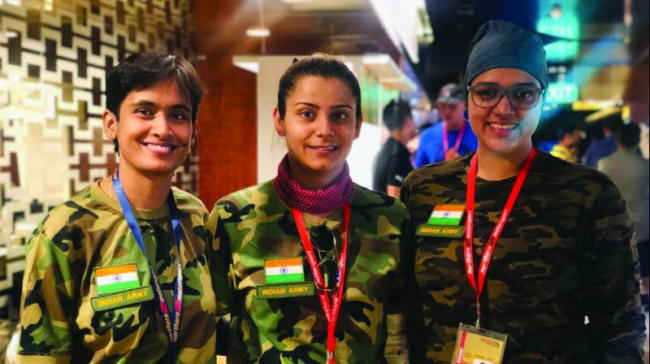
The military and motorcycling are two areas/things where girls are undervalued, however Maj Renuka of the ASC rose through the ranks to become an Army Officer and is now the first female rider in the Indian Army to summit the 18,176-foot Karakoram Pass. She had a surgical emergency a few days prior to this trip, and the physicians strongly suggested a week of bed rest following a laparoscopic procedure. However, she was determined to uphold the Indian Army’s values, and she rode the bike four times her weight, setting a record.
Officer Shreya
Her accomplishments as an officer in the ASC include winning silver in the 2009–10 Haryana Olympic Games, silver and bronze in the 2010–11 Haryana Olympic Games, gold in the 2011–12 Haryana Olympic Games, gold in the 2012–13 Haryana Olympic Games, gold in the 2014 Haryana State Fencing Championship, and many more. This impressive collection of medals will undoubtedly inspire young ladies to pursue their goals using the platform the military provides.
Captain Tanya Shergill
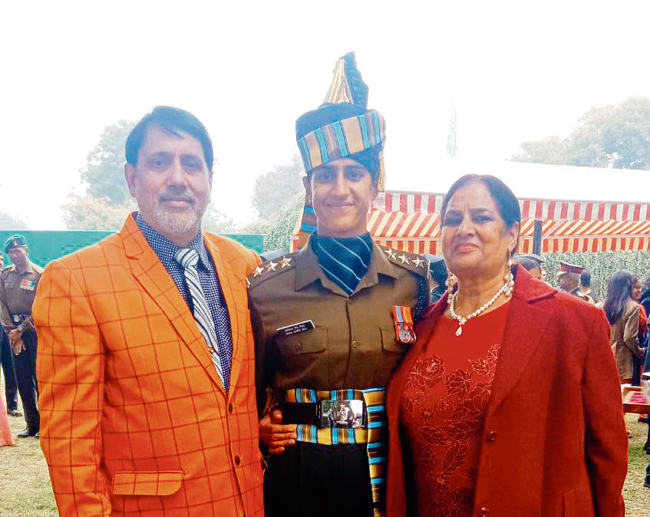
Engineer by training and a fourth-generation officer, Capt. Shergill made history on Army Day by being the first female officer to lead the entire procession. Later, on the Republic Day Parade, she led the Corps of Signals, her parent regiment, and became the first female commander to command a contingent. People from all walks of life praised her for her poise and confidence, which encouraged young ladies to pursue their dreams.
Final Thoughts
These amazing ladies represent unflinching dedication and resolve; they are more than just officers. They are living examples of how passion and dedication can overcome any hurdle and that pursuing one’s aspirations is a gender-neutral endeavour. These inspirational tales of bravery, perseverance, and success demonstrate that women thrive in all spheres of endeavour when they are granted equal rights and empowerment. They serve as a source of inspiration for everyone, serving as a constant reminder that strong, driven people of all genders are the foundation of our country’s grandeur.

